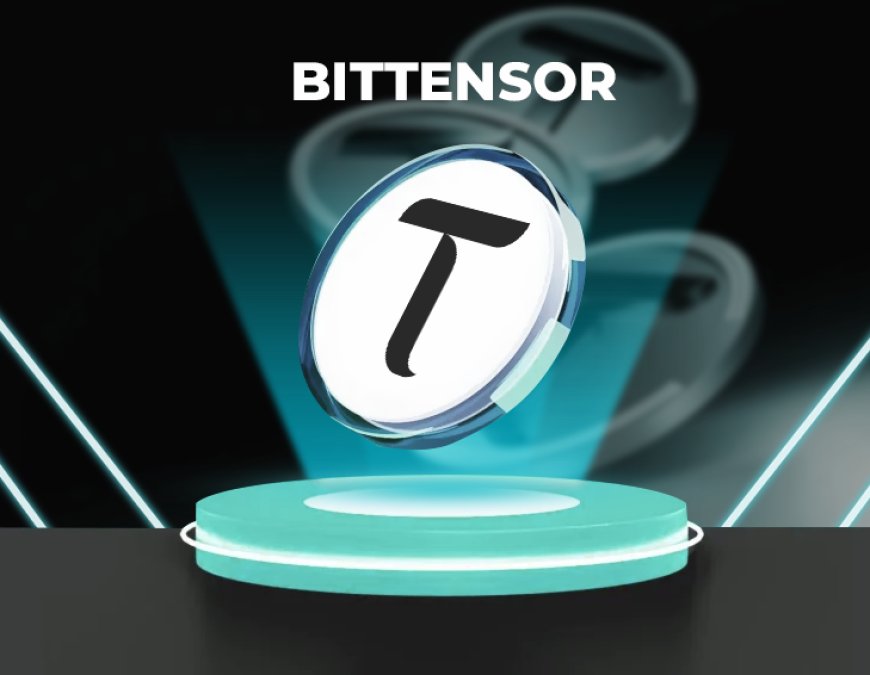BitTensor: Revolutionizing AI with Decentralized Machine Learning and Embedding Networks
Artificial intelligence (AI) has seen rapid growth, with decentralized platforms like BitTensor leading the charge by introducing a revolutionary approach to machine learning and blockchain integration.

BitTensor's innovative system combines decentralized AI with machine learning (ML) to empower a trustless and open environment for developers, validators, and users alike. In this article, we will dive deep into the groundbreaking updates shared during BitTensor’s Twitter Spaces event, exploring the key milestones for 2024, such as the Finney chain upgrade, validator developments, and the role of embedding networks in decentralizing AI.
BitTensor's Leap into the Polkadot Ecosystem
BitTensor has taken significant steps forward, particularly with its integration into the Polkadot ecosystem. This merger offers BitTensor the opportunity to unlock its full potential, transforming the network by increasing decentralization and improving access for all participants. By joining the Polkadot network, Tau (BitTensor’s native token) will become more accessible, moving across different chains rather than being restricted to wrapped tokens. This shift will enable a seamless and trustless environment, providing users with better interoperability.
One of the key milestones in this journey was BitTensor's recent win in the parachain auction, allowing the platform to plug into Polkadot. The foundation has also released an official wallet, marking another essential step in BitTensor's evolution. However, the most highly anticipated update remains the Finney chain upgrade.
The Finney Chain Upgrade: What to Expect
During the Twitter Spaces event, Const, one of the project leaders, elaborated on the next phase of the Finney chain upgrade. This upgrade is not just about improving infrastructure but about enabling the network to operate within the larger Polkadot ecosystem and enhancing the machine learning capabilities of the validators. While the journey has been fraught with challenges—debugging and testing have taken considerable time—the team remains optimistic.
To test the network’s resilience, BitTensor has soft-launched the Finney Alpha testnet in early 2024, with plans to launch a Kusama chain by the end of the month. Kusama, a “canary network,” provides a live environment for developers and validators to experiment with new features in a risk-mitigated setting. By leveraging Kusama’s flexibility, BitTensor can test new functions without jeopardizing the integrity of the Polkadot network. The goal is to launch Finney on Polkadot by mid-March, making it one of the primary focuses for the first quarter of 2024.
Embedding Networks: The Backbone of BitTensor's AI Evolution
One of the most transformative aspects of BitTensor’s system is the introduction of embedding networks. In AI and machine learning, embeddings are vector representations of data, such as words, images, or audio, which are used to train models. BitTensor’s approach to embedding networks allows for enhanced machine learning across multiple modalities, including text, audio, and images.
Embeddings are the foundation of BitTensor’s decentralized AI network. Rather than relying on traditional centralized methods to train machine learning models, BitTensor uses a Mixture of Experts (MoE) approach. This model selects the best “experts” from a decentralized pool of validators to handle specific tasks at any given time, which allows the network to scale more effectively. The MoE system ensures that the best models are chosen for their accuracy and relevance, ensuring the best possible output while maintaining decentralization.
Validator Optimization: A New Frontier
As BitTensor moves forward with its decentralized network, validators remain at the heart of its competitive process. Validators are responsible for maintaining the accuracy of the network by running nodes that perform essential tasks, such as validating transactions and running machine learning algorithms. The competitive nature of the validator ecosystem ensures high performance and uptime, as validators vie for staking rewards. In essence, the better a validator performs, the more rewards they can receive, fostering a meritocratic system.
Const and Mac explained that the validator optimization process is set for a significant overhaul in 2024. Currently, the Nakamoto validation method relies on basic loss measurements to evaluate performance, but future updates will shift towards an embedding-based approach. This shift will allow validators to optimize their machine learning models using more sophisticated methods, including gradient-based optimization, providing them with more accurate performance metrics.
Another major change involves the creation of multi-subnetworks. These subnetworks will allow BitTensor to test and validate different techniques and strategies, all within the same ecosystem. The validator’s role will continue to evolve as the system scales to include more validators across multiple subnetworks, such as those dedicated to audio or image generation.

Future Plans: Expansion into Multiple Modalities
2024 will be a pivotal year for BitTensor, as the platform expands its machine learning capabilities into music generation, image embeddings, and more. While the platform has primarily focused on text-based machine learning models thus far, the introduction of audio and image networks marks a significant step forward. These new modalities will enable the creation of a more robust AI ecosystem that can handle a variety of tasks across different sectors, from content creation to data analysis.
One of the most exciting prospects for 2024 is the launch of a new chatbot model, similar to ChatGPT, but integrated directly into the BitTensor network. This chatbot will communicate with other agents within the system, leveraging embeddings to improve its responses. By utilizing the decentralized nature of BitTensor’s network, the chatbot will have access to a vast amount of data, all without relying on centralized organizations.
Decentralized Governance: The Future of BitTensor
As the BitTensor ecosystem matures, the governance model will also evolve. The project team has already made it clear that the long-term goal is to shift from a team-led governance structure to a decentralized, community-driven model. In 2024, the network will begin implementing the initial steps towards a Decentralized Autonomous Organization (DAO). Once fully operational, this DAO will empower the community to make key decisions regarding the network's future, including validator selection, protocol upgrades, and staking rewards.
The transition to a DAO will be one of the most significant changes in BitTensor’s governance model, allowing the community to take an active role in shaping the platform’s direction. By decentralizing governance, BitTensor aims to create a more open, transparent, and democratic system that aligns with its core principles.
Conclusion: A New Era of Decentralized AI
BitTensor is at the forefront of a new era in AI and machine learning. With its innovative approach to decentralized networks, embedding technology, and validator-driven optimization, the platform is set to revolutionize how AI operates in a trustless, decentralized environment. As 2024 unfolds, the Finney chain upgrade, expansion into new modalities, and the shift toward decentralized governance will solidify BitTensor’s position as a leader in decentralized machine intelligence.
For developers, validators, and AI enthusiasts alike, the future is bright, with endless possibilities waiting to be explored. BitTensor is not just building an AI network; it’s creating a decentralized AI ecosystem where innovation thrives, and the community holds the keys to its future.
Source : @The Bittensor Hub.
















